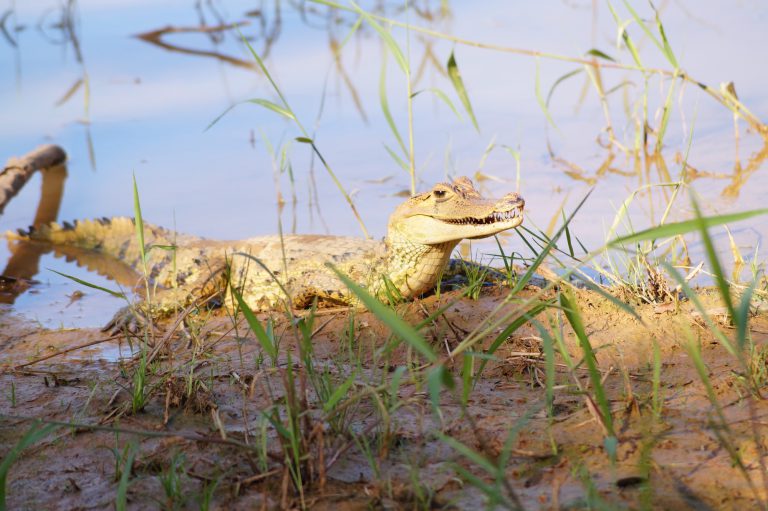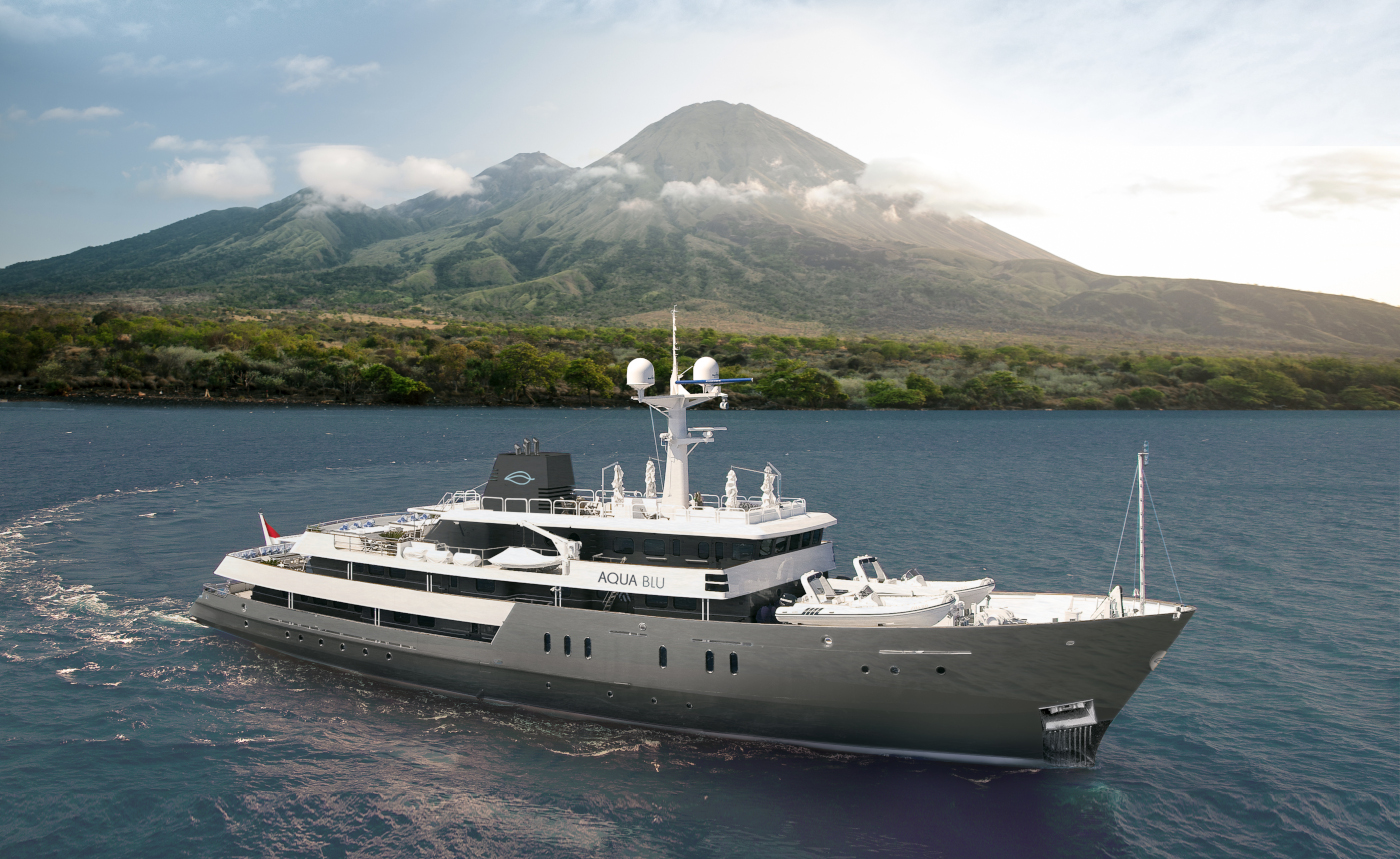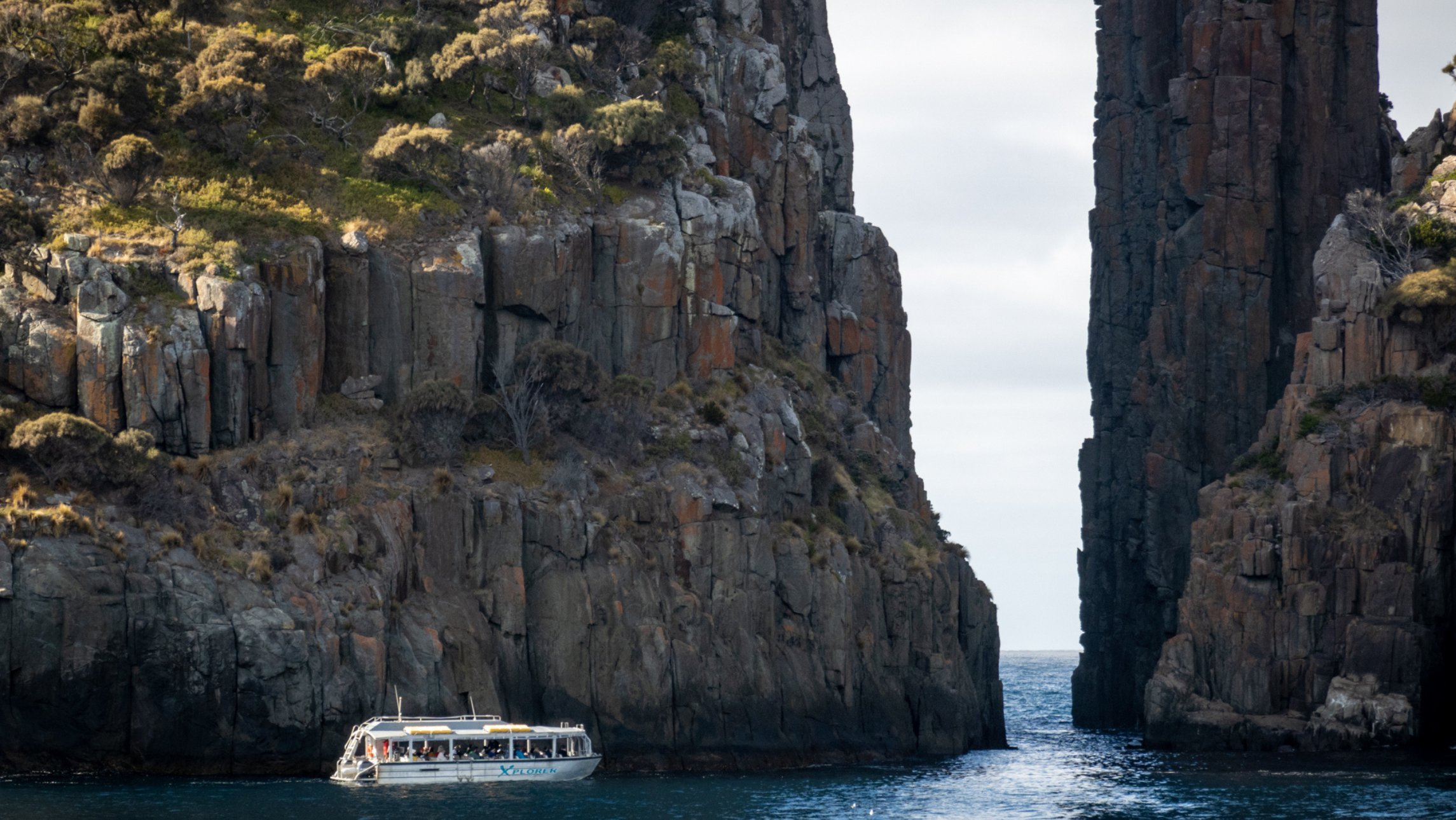An Amazon River expedition cruise is a perfect complement to your South American adventure. Encounters with deadly reptiles and hungry piranhas are par for the course in this wild waterway.
The caiman’s eyes shine like LEDs in the torchlight. He freezes, head just above the water, unaware that our searching beam has revealed his hiding place among the debris on the muddy bank. We close in and I pounce. Snatching the deadly reptile behind the neck, I heave him into the boat.
“Very good,” says Roland, my guide, clearly pleased at my crocodile-wrestling skills. “As you can see, this little guy is just a few months old. Mum is probably not far away.”
Okay, okay. In truth the 40-centimetre baby black caiman was easily plucked from the bank and the blue-tongue and stump-tailed lizards of my childhood were ferocious monsters by comparison. After a short lesson in reptile anatomy from Roland, our caiman is placed delicately back on the bank and quickly scurries away to find a new hiding place.
Like our own crocodiles, young caimans fend for themselves after just a few months, hunting frogs and small fish. While not truly threatened, Amazon caiman populations are still dependent on conservation to help them recover from earlier over-hunting.
Here in the Pacaya Samiria National Reserve, deep in Peru’s Amazon rainforest, the luxury river vessel MV Aqua transports adventure-seeking passengers in comfort along such evocatively named tributaries of the Amazon as the Yarapa (turtle), Yanayacu (blackwater) and Ucayali (canoe-breaker). The Amazon Basin is home to more species of fish than the entire Atlantic Ocean. About one-third of all animal species in the world live in the Amazon Rainforest, including more than 500 species of catfish alone!
At more than five million acres, roughly twice the size of the US’s Yellowstone National Park, the reserve tries to protect the sensitive biodiversity within its nominal borders. Poaching and illegal harvesting is rife among the poor Riberenos (River) families looking to feed their average of six children. To assist the protection of the reserve, Aqua Expeditions works with nearly 300 local communities to reinforce the importance of sustainability. Villagers are often drafted as volunteer rangers in exchange for manageable fishing and farming rights. Hunting is forbidden.
In the wet season (November to February or March), the river level rises more than nine metres, flooding almost the entire reserve. This seasonal influx forms a várzea (freshwater swamp forest) and the wildlife, particularly mammals, is easier to find. In the dry season, like now, the river levels are so low that some locals are dragging their canoes through the mud. There’s a flip side to each season, though. In the wet, there are more mosquitoes and, while navigation is certainly more difficult in the dry, hikes are more rewarding and the fishing is a breeze.
One of the fun distractions on any Amazon cruise is piranha fishing. These little blighters are voracious and can smell our tiny slivers of Argentinean sirloin a mile away. The tackle is simple: just a piece of line tied to a stick with a little sinker and hook. Agitate the water with the tip of your stick before dropping in the bait and the razor-toothed rascals are onto you in a flash. Of the 35-odd known species, the short-nosed red-belly piranha is the nastiest little brute in the family. His katana-sharp fangs are clearly visible and snap noisily in protest when he’s hoisted aboard. Good eating? Sure: deep-fry him whole and pick the light flesh off with your fingers or a small fork.
Unsurprisingly, the cuisine aboard MV Aqua features many dishes that incorporate the produce of the jungle: heart-of-palm soup, camu-camu fruit (Myrciaria dubia) and the ubiquitous and delicious catfish. The soft, moist white flesh lends itself to numerous dishes and works perfectly with the rainforest-harvested wild tomatoes and kumera. House wine and beer are included with meals.
The vessel itself, while not a feat of glamorous marine engineering, is in keeping with the many vessels we encounter. Barges, skiffs, canoes and dinghies make up the local river fleet and their design briefs are clearly based on function. MV Aqua’s capacity is 24 passengers in 12 spacious air-conditioned suites. Common areas are generous and dining is akin to being in an intimate restaurant.
In 2011, Aqua Expeditions will launch a slightly larger second vessel, MV Aria, on similar three- to seven-night voyages. Depending on the total length of your stay, four nights may be enough.
Beyond tracking capybara, iguana and caimans in the vast Amazonian expanses, there are several opportunities to visit local communities. On one occasion, Roland takes us shopping in the markets at the little port town of Nauta and, laden with fruit, fish and vegetables, we turn up unannounced on the doorstep of a shanty family. This heart-warming gesture leaves our small group glowing momentarily, but tomorrow we know they’ll be back to square one.
Sustainable tourism is growing in the region and starting to bring benefits to these isolated populations, but there is still a long way to go. Aqua Expeditions, at least, is holding up its end of the bargain.
Rod Eime was a guest of LAN and Aqua Expeditions.
Highs
• Superb natural and cultural experience.
• Comfortable, well-appointed vessel.
• Expert staff and guides.
Lows
• Navigation is tricky and limited in the low-water season.
• There are lots of mozzies in the wet season.
• It’s hot: stay hydrated and sun-protected.
Doing it
Bring binoculars, a camera with a long lens, tropical-strength insect repellent, sunscreen, a sun hat and light, long-sleeved shirts. Don’t forget gifts for village donations, such as exercise books, pencils and clean used clothing. Visit Aqua Expedition’s Amazon itinerary here
LAN Airlines flies daily from Sydney to Santiago, Chile, and to more than 50 destinations in 10 South American countries. From Santiago, LAN flies daily to Lima, Peru, and on to Iquitos. For more information, call 1800 558 129 or visit www.lan.com. For information about Peru, visit Peru tourism’s website here








